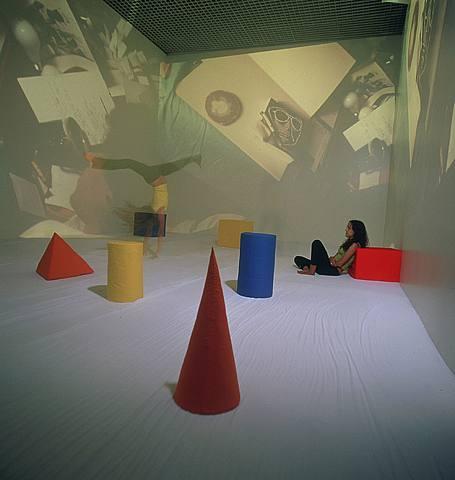Organized Delirium
dal 10/12/2004 al 22/1/2005
Segnalato da
Neville D'Almeida
John Cage
Gordon Matta-Clark
Helio Oiticica
Yoko Ono
Jack Smith
Robert Smithson
10/12/2004
Organized Delirium
Galerie Lelong, New York
New York 1970-1978. The show examines the relationships and correspondences between an influential group of international artists, at a time in New York when the boundaries between art and life were shifting. Performance, cinema and music, as well as participation in both popular and demimondaine culture are the commonalities in the experimental artworks made by Neville D'Almeida, John Cage, Gordon Matta-Clark, Helio Oiticica, Yoko Ono, Jack Smith and Robert Smithson

New York 1970-1978
Works by Neville D'Almeida, John Cage, Gordon Matta-Clark,
Helio Oiticica, Yoko Ono, Jack Smith, Robert Smithson
Organized Delirium examines the relationships and correspondences between an influential group of international artists, at a time in New York when the boundaries between art and life were shifting. Performance, cinema and music, as well as participation in both popular and demimondaine culture are the commonalities in the experimental artworks made by D'Almeida, Cage, Matta-Clark, Oiticica, Ono, Smith and Smithson.
Organized Delirium is a quote by the artist Hélio Oiticica (1937-1980), a key member of the avant-garde of Latin America, who lived in New York from 1971-1978. Though Oiticica used it to describe his own experiments in film and media, it is undeniably a reference to Jack Smith, who described his film works as “aesthetic delirium.†This intersection of language and aesthetic is a vivid example of the liberating atmosphere of the time, when artists borrowed freely from each other, and mixed in the downtown artistic and social world.
Mixed media and film provided an ideal channel for the artists' explorations. Neville D'Almeida and Hélio Oiticica, both Brazilian but living in New York, collaborated on a series of cinema experiments, dubbed “quasi-cinemas.†In a reversal of their normal artistic roles (D'Almeida being a filmmaker and Oiticica an artist) Oiticica photographed the images for which D'Almeida designed the sets in the installation Cosomococa2-OnoObject, exhibited here, a play on Yoko Ono's name. Another related work (not in the show) by D'Almeida and Oiticica, Cosmococa4 Notations, was dedicated to John Cage (1912-1992).
Both John Cage and Yoko Ono's influences on poetry, performance, music and sculpture in New York in the 1970s are legendary. Among other works, Ono's groundbreaking film Fly will be exhibited. Cage will be represented by a plexigram from 1969, Not wanting to say anything about Marcel, as well as works on paper which use the I Ching.
Matta-Clark (1943-1978) incorporated performance, film and sculpture in many of his works which inserted the art object as a means for re-organizing social hierarchies. Both Oiticica and Matta-Clark challenged the traditional idea of audience and art work. Though not all the artists in the show were friends, Matta-Clark shared a friendship with Smithson and Oiticica, and no doubt facilitated exchanges among them. Drawings for experimental projects by Smithson are included in the show as well as works by Matta-Clark.
Jack Smith (1932-1989), best known for his controversial film Flaming Creatures (1963), was a leading member of the New American Cinema group. He is also celebrated for improvisations and performances; the exhibition represents this aspect of Smith with scripts and photographs.
Though not a full examination of the period, Organized Delirium begins a dialogue for a further exploration of artists around the matrix of Hélio Oiticica in New York in the 1970s.
Image: Hélio Oticica and Neville D'Almeida, Cosmococa2: Onobject, 1973
Galerie Lelong
528 West 26th Street New York, New York 10001 USA
Gallery Hours: Tuesday to Saturday, 10 to 6; Closed December 24 –January 2.
Contact: Stephanie Joson for photographs (212) 315-0470
Forthcoming exhibition: Petah Coyne New Sculpture January 29 – March 20, 2005



